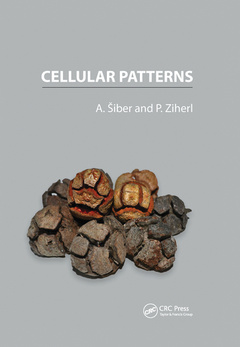Cellular Patterns
Auteurs : Siber Antonio, Ziherl Primoz

The mechanics underlying the form and structure of biological tissues is being increasingly investigated and appreciated, with new results appearing at a fast pace. Cellular Patterns covers the salient elements of this thriving field of research in a textbook style, including both historic landmark results and recent achievements.
By building on concepts such as packing, confinement, surface tension, and elastic instabilities, the book explains the structure and the shape of sheet-like and bulk tissues by adapting the mechanics of continuous media to living matter. It reviews experimental results and empirical laws, and wherever possible, it discusses more than a single theoretical interpretation of a given phenomenon.
The in-depth treatment of technical details, the many boxes summarizing essential physical and biological ideas, and an extensive set of problems make this book suitable as a complementary textbook for a graduate course in biophysics and as a standalone reference for students and researchers in biophysics, bioengineering, and mathematical biology interested in the mechanics of tissue.
Features:
- Provides an overview of patterns and shapes seen in animal tissues in addition to an interpretation of these structures in terms of physical forces and processes
- Contains detailed analysis and a critical comparison of mechanical models of cells, tissues, and morphogenetic movements
- Presents a visually rich style which is accessible to physicists and biologists alike
Introduction. Cells as physical objects. Inplane structure of singlelayer tissues. Shape of epithelia. Morphogenesis. Bulk tissues. Afterthoughts.
Antonio Siber, Institute of Physics, Zagreb, Croatia
Primoz Ziherl, Faculty of Mathematics and Physics, University of Ljubljana, and Jozef Stefan Institute, Ljubljana, Slovenia
Date de parution : 06-2020
17.8x25.4 cm
Date de parution : 12-2017
17.8x25.4 cm
Thèmes de Cellular Patterns :
Mots-clés :
Contractile Acto Myosin Ring; Sea Water; voronoi; Germband Extension; tessellation; Convergent Extension; A; Šiber; Apical Lamina; P; Ziherl; Differential Adhesion Hypothesis; Laser Spot Welds; Apico Basal Cell Polarization; Hyaline Layer; Wing Epithelium; Polygonal Tilings; Polygon Classes; Vegetal Plate; Ventral Furrow; Cephalic Furrow; Rhombic Dodecahedron; Liquid Drop Model; Polygon Fractions; Vitelline Membrane; Total Edge Length; Voronoi Tessellation; Topological Rearrangements; Truncated Octahedron; Styela Clava; Cornified Layer



